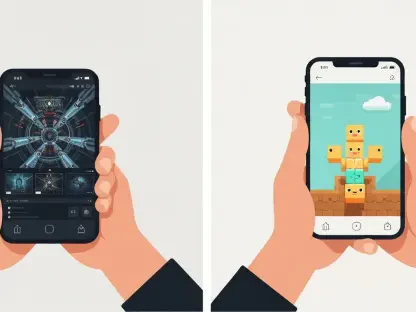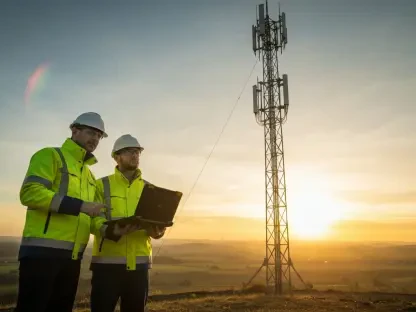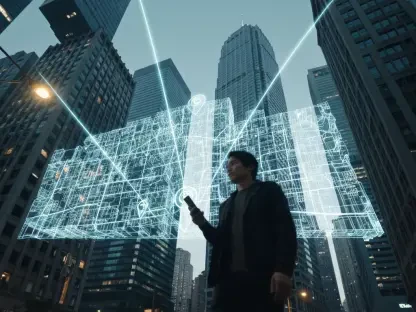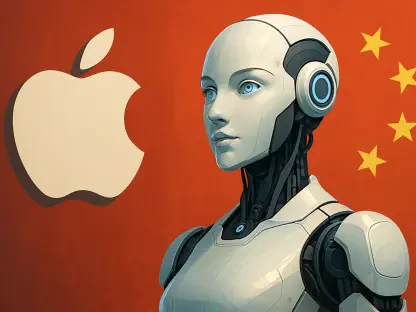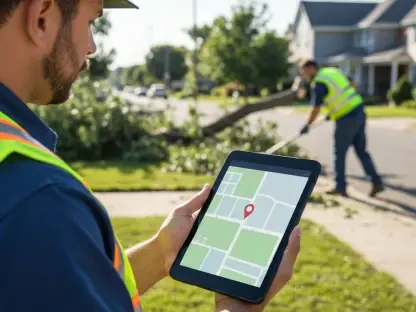The fashion industry is experiencing a renaissance powered by virtual reality (VR) and augmented reality (AR). These technologies are not only revamping design processes but also revolutionizing the way brands engage with consumers. By embracing VR and AR, the fashion sector is stepping into a future where sustainability, creativity, and cultural storytelling are deeply intertwined. This article examines how these immersive technologies are shaping the industry and providing innovative solutions for modern challenges.
Revolutionizing Design Processes
Digital Fashion Prototyping
Virtual and augmented reality are dramatically changing traditional design and prototyping methods. One of the most transformative impacts is on fashion prototyping. Designers now have the ability to create and test garments within a virtual environment, essentially eliminating the need for physical samples. This shift is significant not only from an environmental standpoint but also in terms of cost efficiency and time savings. Reducing the production of physical samples diminishes waste, thereby contributing to the fashion industry’s growing emphasis on sustainability. Furthermore, it streamlines the design process, allowing designers to make adjustments in real-time without the associated costs of materials and labor.
Beyond minimizing waste, the shift to digital prototyping also opens up new horizons for creativity. For example, designers can experiment with bold concepts that might be too risky or expensive to trial physically. Additionally, using VR and AR platforms allows for greater precision in design, ensuring that the final physical products are closer to the designer’s original vision. This digital-first approach is not only pragmatic but also aligns with the industry’s broader push for sustainability, a critical factor given the growing consumer demand for environmentally responsible practices.
Collaborative Digital Projects
Projects like those spearheaded by The Immersive KIND showcase the potential of VR and AR in fashion. Led by Kadine James, The Immersive KIND collaborates with entities like Union Avatars to animate fashion designs within immersive environments. One notable example includes their collaboration with designer Rory Scott, utilizing Snap AR to create a virtual avatar adorned in Scott’s garments. This initiative did not just present Scott’s designs in a digital space but also offered an engaging and interactive way for consumers to experience fashion.
Such collaborative projects are redefining how fashion is consumed and experienced, moving beyond traditional runway shows and static images. They create dynamic and engaging platforms where fashion can be appreciated from multiple angles and in various contexts. This approach promotes innovative design by allowing designers and brands to experiment with new media and technologies. It also encourages consumer interaction and participation, shifting the consumer’s role from passive observer to active participant. By leveraging the immersive capabilities of VR and AR, fashion brands are finding fresh ways to captivate their audiences and build deeper connections with them.
Enhancing Consumer Engagement
Virtual Showrooms and Interactive Experiences
Brands are adopting AR-powered virtual showrooms to provide consumers with interactive and immersive shopping experiences. These virtual spaces allow customers to explore products in 3D, reducing the need for physical inventory and enhancing the overall shopping experience with dynamic storytelling. Diesel and Clarins Beauty are among the brands leading the charge by integrating high-quality 3D renderings and interactive elements into their showrooms.
These virtual showrooms offer brands a significant advantage by allowing customers to experience products as if they were present in a physical store. By creating high-fidelity digital replicas of their products, brands can offer a more accurate and engaging preview that bridges the gap between online and offline shopping. This enhanced interaction not only makes the shopping process more enjoyable but also fosters a deeper connection between the consumer and the brand. Furthermore, by reducing the reliance on physical inventory, brands can decrease their environmental footprint, aligning their operations with sustainable business practices. The use of virtual showrooms represents a forward-thinking approach to retail, highlighting the potential for AR technology to revolutionize consumer engagement.
Bridging Physical and Virtual Retail
Collaborations like Artificial Rome and Clarins Beauty’s “Clarins Virtual World” highlight how VR and AR can blend physical and digital retail. Using Unreal Engine 5 and generative AI, the project created an environment where users could interact with photorealistic products, offering a sustainable alternative to traditional retail displays. In this virtual world, visitors navigate a maze, create custom avatars, and explore products in photorealistic detail without the environmental costs associated with physical displays.
This integration of VR and AR into the retail space is not only about reducing environmental impact but also about enriching the consumer experience. By immersing customers in a fully interactive and visually stunning world, brands can offer a level of engagement that cannot be matched by traditional retail. This innovation in consumer engagement offers a glimpse into the future of retail, where virtual and physical experiences are seamlessly integrated to provide more personalized and memorable interactions. Moreover, this approach allows brands to demonstrate their commitment to sustainability, appealing to a growing demographic of environmentally conscious consumers.
Merging Fashion with Education and Culture
Cultural Storytelling Through Gaming
The integration of VR and AR extends beyond fashion to educational and cultural realms. Kadine James’s virtual recreation of King Tut’s tomb in Fortnite exemplifies how gaming platforms can be used to make cultural heritage universally accessible. This approach transforms traditional, static museum experiences into dynamic, interactive adventures that engage visitors more deeply. Utilizing Unreal Engine for Fortnite (UEFN), The Immersive KIND developed a digital recreation where players can navigate the tomb, discover artifacts, and learn about ancient Egyptian history in an entertaining and immersive manner.
This blending of culture and gaming demonstrates the potential for VR and AR technologies to revolutionize education by making historical and cultural content more engaging. By turning passive learning experiences into active, immersive explorations, these technologies can increase understanding and retention of information. This method of storytelling not only captivates younger audiences but also broadens the reach of cultural education to those who might not have access to physical museums. It also exemplifies how digital platforms can serve as powerful tools for cultural preservation and education in the modern age.
Educational Opportunities in Virtual Spaces
The use of VR and AR in educational contexts opens up new avenues for interactive learning. By creating digital representations of historical artifacts and environments, these technologies allow for deeper engagement with cultural content. This not only makes education more accessible but also more enjoyable. Virtual environments can be customized to suit various educational needs, providing an immersive learning experience that transcends the limitations of traditional classroom settings.
For instance, VR and AR can transform how historical events are taught by enabling students to virtually “step into” historical moments. This immersive experience can deepen students’ understanding and retention of information compared to traditional methods of education. Furthermore, these technologies can democratize education by making high-quality educational experiences available to a global audience, regardless of geographical location. This accessibility is particularly crucial for subjects like history and culture, where access to physical artifacts and locations can be limited. By leveraging the power of VR and AR, educators can create more inclusive and engaging learning environments that cater to diverse learning styles and needs.
Driving Sustainability and Innovation
Minimizing Waste and Overproduction
One of the most significant benefits of VR and AR in fashion is their potential to drive sustainability. By reducing the need for physical samples and inventory, these technologies help minimize waste and unnecessary overproduction. This shift not only supports environmental goals but also fosters a more responsible industry. Digital prototyping and virtual showrooms are two key areas where these technologies make a meaningful impact, promoting eco-friendly practices throughout the fashion lifecycle.
The digital transformation enabled by VR and AR ensures that fewer resources are used in the design phase, leading to a reduction in material waste. Moreover, by adopting a less resource-intensive process, brands can produce more sustainable collections and adopt leaner manufacturing methods. This approach is in line with global sustainability targets, and it boosts the fashion industry’s efforts to become more environmentally conscious. Additionally, virtual try-ons and showrooms reduce the need for physical retail space and inventory, further minimizing the environmental impact of traditional fashion retail.
Creating Immersive Consumer Experiences
The fashion industry is undergoing a significant transformation driven by the advancements in virtual reality (VR) and augmented reality (AR). These cutting-edge technologies are not merely redesigning the creative processes behind fashion but are also revolutionizing brand-consumer interactions. By integrating VR and AR, the industry is moving towards a future where sustainability, innovation, and cultural storytelling are closely linked. This shift marks a new era in fashion, where designers can explore new realms of creativity and brands can offer more engaging and personalized experiences to their customers. VR and AR provide unique solutions to modern-day challenges, such as reducing waste through virtual samples and fostering inclusivity and diversity by allowing consumers to visualize outfits on various body types. This article delves into how these immersive technologies are redefining the fashion landscape, offering a glimpse into the future of fashion where tradition and innovation merge seamlessly to create a more dynamic and inclusive industry.


